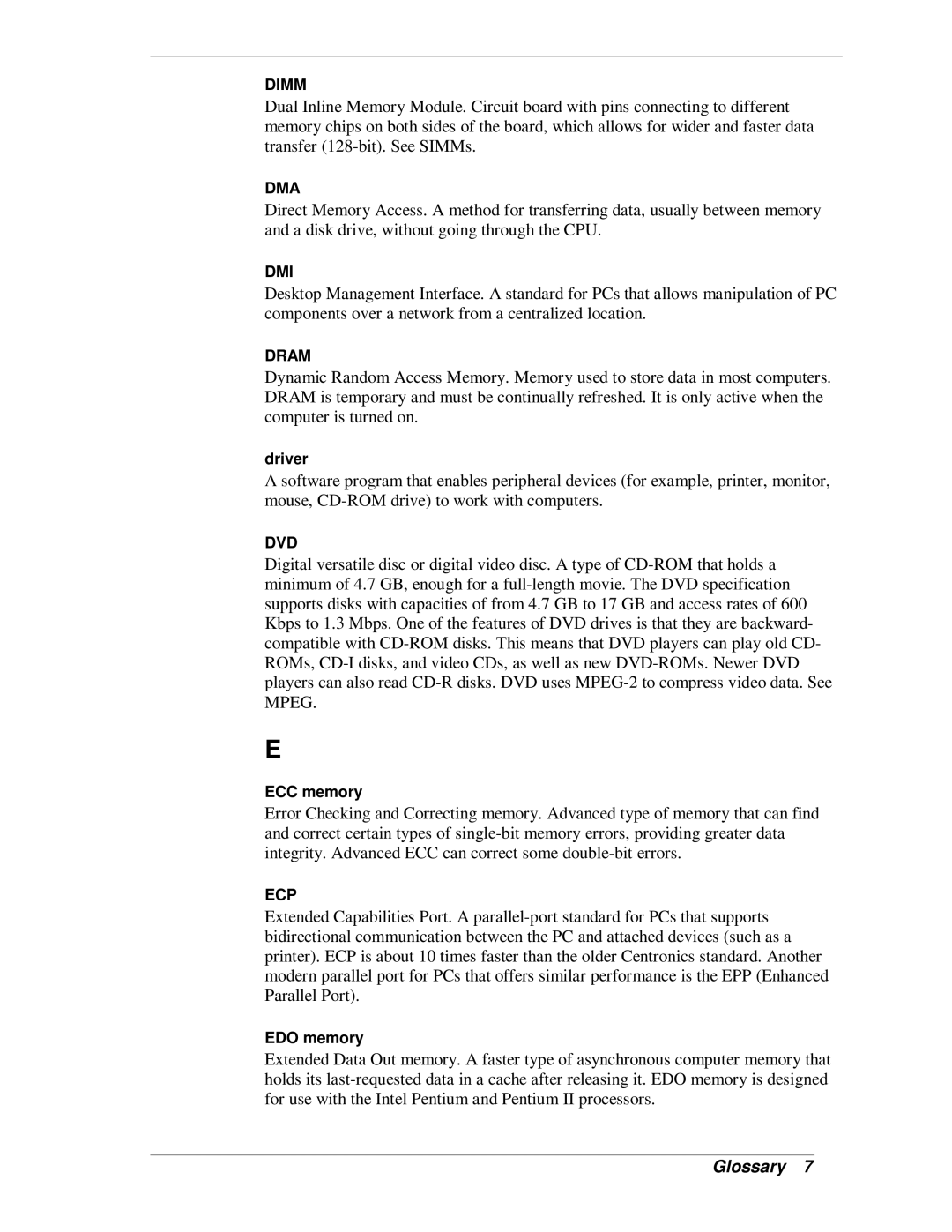
DIMM
Dual Inline Memory Module. Circuit board with pins connecting to different memory chips on both sides of the board, which allows for wider and faster data transfer
DMA
Direct Memory Access. A method for transferring data, usually between memory and a disk drive, without going through the CPU.
DMI
Desktop Management Interface. A standard for PCs that allows manipulation of PC components over a network from a centralized location.
DRAM
Dynamic Random Access Memory. Memory used to store data in most computers. DRAM is temporary and must be continually refreshed. It is only active when the computer is turned on.
driver
A software program that enables peripheral devices (for example, printer, monitor, mouse,
DVD
Digital versatile disc or digital video disc. A type of
E
ECC memory
Error Checking and Correcting memory. Advanced type of memory that can find and correct certain types of
ECP
Extended Capabilities Port. A
EDO memory
Extended Data Out memory. A faster type of asynchronous computer memory that holds its
